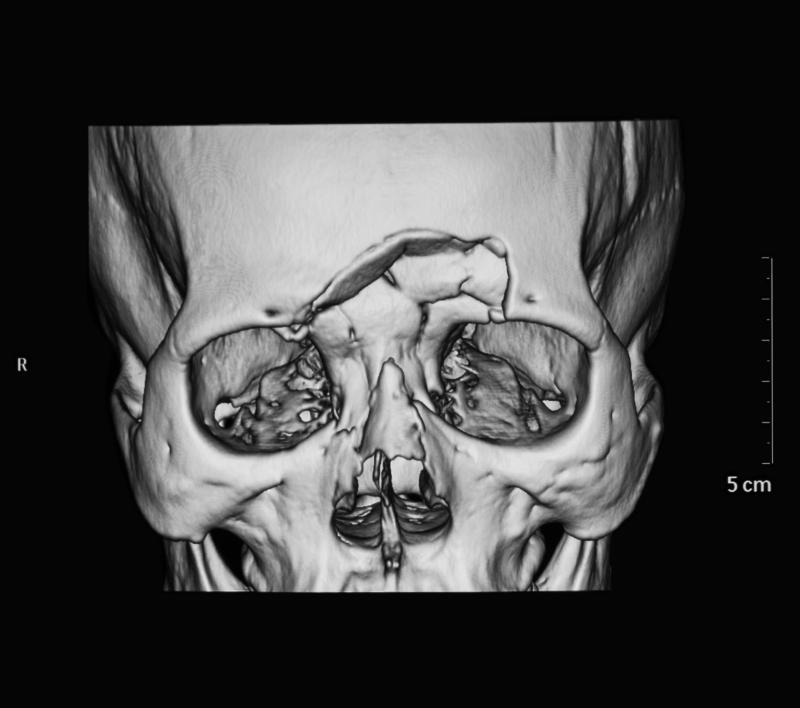Facial trauma is when your face and jaw sustain injuries, leading to significant consequences on your face’s function and appearance. Dealing with facial trauma can be an emotionally challenging experience. It can significantly impact crucial functions, such as blinking, smiling, talking, and eating, as well as alter the way you look.
The treatment of facial trauma focuses on the restoration of function and the appearance of the face. Typically, the treatment involves surgical intervention.
Facial trauma treatment includes procedures ranging from primary wound closure to more complex interventions like skin grafts, flaps, and bony fracture repair. The specific surgical approaches and techniques depend upon the severity and location of the trauma.
Given the sensitivity and emotional toll of such injuries, early evaluation and prompt treatment are crucial for favorable outcomes. At Kimball Health Services, Dr. William Wyatt and his team provide surgical assistance to treat facial injuries and deformities.
Facial trauma refers to damage to the bones, soft tissues, or nerves of the face, often resulting from incidents such as accidents, assaults, sports injuries, falls, burns, or animal bites. Other contributing factors may include cancer, surgery, and illness.
The human face is a complex structure composed of numerous bones, blood vessels, nerves, muscles, and sensory organs. If left untreated, facial trauma can permanently affect crucial functions such as sight, chewing, speaking, and swallowing and also lead to disfigurement.
Facial trauma can manifest in many ways and cause a high degree of physical and emotional distress. In general, facial trauma includes:
- Soft Tissue Trauma: Soft tissue injuries characterized by cuts, tears, or breaks in the skin cause damage to muscles, ligaments, or tendons.
- Facial Fractures: The common facial fractures include:
- Nasal fractures
- Forehead fractures
- Orbital fractures
- Zygomatic fractures
- Maxillary or mandibular fracture
Untreated fractures in the face can result in functional problems. Age, health status, severity, and fracture location determine the appropriate treatment for broken facial bones.
- Facial Nerve Injury: Injuries resulting in weakness or paralysis of the face need urgent evaluation.
- Cancer Surgery: Surgical procedures for cancer removal can result in facial disfigurement.
The diagnosis involves a physical examination. At times, imaging tests, such as a CT scan, are employed to assess the extent of the injury more thoroughly. These steps help in determining the subsequent measures for your treatment.
Treating facial injuries involves a comprehensive process, including initial repair, close follow-up, and the potential for future revisions.
Severe facial trauma may require reconstructive surgery. The main goal of facial reconstructive surgery is to restore the function and appearance of the face.
Facial reconstruction surgery can address the following:
- Facial Fractures: Reconstructive surgery is employed to repair and restore facial fractures.
- Cosmetic Purposes: Procedures like rhinoplasty, otoplasty, cleft lip correction, and scar revision are done for cosmetic purposes.
- Cancer Removal: Reconstructive surgery is utilized to restore normal facial shape and appearance after cancer removal.
Standard facial reconstruction processes involve the following procedures.
Microsurgery
Microsurgery, or microvascular reconstruction, involves intricate reattachment of the tiniest blood vessels in damaged living tissue. The procedure is to harvest tissue grafts from your arms, legs, abdomen, or back and meticulously transfer them to your mouth, throat, or face to replace missing tissues.
Microsurgery is employed after cancer removal and for severe traumatic injuries to your face or neck. Commonly reconstructed areas include your jaws, mouth, throat, and various facial, scalp, and neck regions.
Nasal Reconstruction
Nasal reconstruction addresses injuries, deformities, and breathing issues stemming from a broken nose, prior nasal surgery, nasal skin cancer treatment, and congenital problems, such as those linked to cleft lips.
Facial Bone Reconstruction
Facial bone reconstruction is for patients with jaw, cheekbones, orbital bones, and skull fractures. It's suitable for recent or persistent issues post-facial fractures.
Mohs Reconstruction
Mohs reconstruction involves plastic and reconstructive surgery to restore skin tissue after the Mohs surgery procedure. Mohs surgery removes cancerous cells by removing thin layers of skin.
After Mohs surgery, reconstructive surgery may be necessary. Reconstruction options vary from local tissue rearrangement to skin grafts or complex transfers for optimal facial balance and symmetry.
A skin graft involves taking a piece of healthy skin from one part of your body to repair damaged or missing skin elsewhere. However, this skin does not have its own source of blood flow.
On the other hand, a skin flap is healthy skin and tissue partially detached and moved to cover a nearby wound.
These procedures are crucial to heal more serious, larger, and deeper wounds that result from burns, skin loss from severe infections, and surgeries for skin cancer.
At Kimball Health Services, Dr. Wyatt is our expert in treating facial trauma. Together with his team, Dr. Wyatt’s comprehensive approach ensures initial repair, close follow-up, and potential future revisions.
In case of an emergency, call 911 or walk into our emergency department anytime. For appointments, call ahead or fill out our online form. We're here for you whenever you need us.








